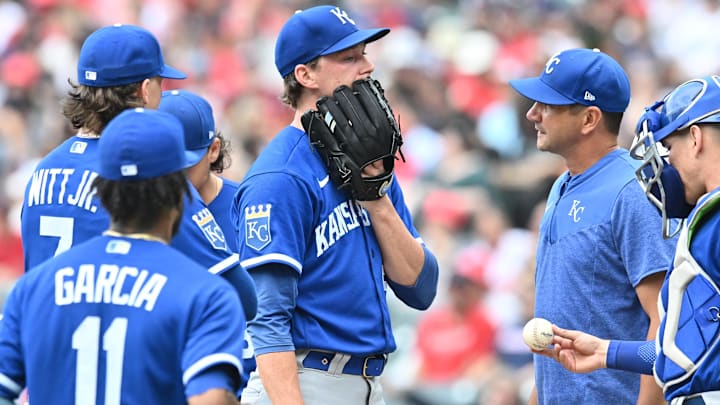The Royals made some smart offseason roster moves
The Royals have made some extremely well-thought-out roster moves since Opening Day 2023. Acquiring young Cole Ragans from the Rangers for Aroldis Chapman could potentially go down as the biggest trade in Picollo’s career. Ragans took the Opening Day job and has not looked back. In 23.1 innings this season, he has a 1.2 WHIP with 29 strikeouts and only seven walks. And he's given up only one home run. He’s given up only one home run in 23 innings. He’s been outstanding.
Adding off-season free agent signees Seth Lugo and Michael Wacha is also returning early dividends. Wacha has had a strong start with a 1.056 WHIP, allowing only four walks to 17 strikeouts. Lugo has been masterful at keeping the ball in the park — in an era when major league pitchers average 1.2 HR/9 (2023), Lugo hasn't given up a single home run in 18.2 innings. Although he hasn’t been much of a strikeout pitcher, he’s putting his team in position to defend, allowing only three earned runs in three starts. That’s incredible.
Then there’s Alec Marsh. He is carrying a terrific 1.080 WHIP after 16.2 innings. He’s done well to keep the ball in the ballpark and he’s not walking batters with a 1.6 BB/9. There's a lot Marsh can learn from watching Wacha and Lugo, two veteran pitchers who do a very good job of locating pitches.
